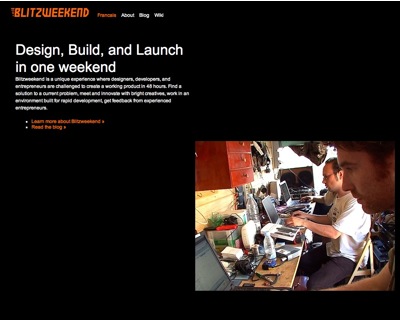In the last article, we discussed how you would go about describing your company’s product or service. Now that potential investors have a clear idea of what your company does, you need to show them the potential for how much money the company can make. You do this by outlining the market size potential and revenue model for your company.
 First lets start with market size. The amount of market share your company will get each year is obviously highly speculative, especially for a new company offering a new product or service. However, rather than just come up with a number such as the number of customers you project to have after the first year, it is important to show the reasoning behind this number. You will need to do research to determine the total potential market you can serve and build up how you will get a share of the market.
First lets start with market size. The amount of market share your company will get each year is obviously highly speculative, especially for a new company offering a new product or service. However, rather than just come up with a number such as the number of customers you project to have after the first year, it is important to show the reasoning behind this number. You will need to do research to determine the total potential market you can serve and build up how you will get a share of the market.
If we take our hypothetical company that is building cases for iPods, what is the total market size? In determining the market size, you need to be specific:
Is it everybody that owns a portable MP3 player – no, you are only making cases for iPods
Is it everybody that owns an iPod – no, you are only making cases for certain models of iPods
Is it everybody that owns the specific models of iPods you are targeting – no, not everybody that owns an iPod is going to buy a case for it
Is it everybody that would purchase a case for the specific models of iPods you are targeting – maybe, but will you be attempting to sell to everybody globally day one or will you focus on one region, such as North America
By following a line of reasoning such as the above, you will be able to narrowly focus on the specific market you will be targeting and be able to give numbers in terms of how large this market is in terms of total customers or dollars. You will also want to research statistics for how much the market is growing each year.
Now that you have defined the size of the market, you need to determine how much share you will get of this market.
Here is where things become speculative as you will not have 100% certainty of the uptake of your product. However, again, the main point is not the final number. It is to show you have a well thought out reasoning so you can demonstrate you have a clear understanding on how you will launch into the market. In terms of determining what year over year share you project to get, it is best to try show how your market share is based on fundamental building blocks. For example, if your model for selling iPod cases was to establish your own retail stores as the channel to customers, you would want to show a market share based on how many cities you will establish a presence in over time & how many sales would you expect per store. Or if your model for selling iPod cases was to license designs to existing manufacturers of iPod cases, then you would want to base your market size on which manufacturers you will be able to sign up over time and how much revenue you will get per each manufacturer.
In addition to talking about the market size, you also need to ensure you clearly explain your revenue model –
- Who are your customers?
- How do you reach them to sell your product?
- What are they buying from you?
In our iPod example, depending on the business model you chose there are many different revenue models. Maybe you look to manufacture and sell your product through retail channels such as Best Buy, maybe you look to license your product to other manufacturers of iPod cases, maybe you look to give your product away for free but make money via ad placements on the case. In order to be able to properly assess a company, an investor is going to want to have a clear picture of how your company generates revenue.
When most entrepreneurs pitch what their market share and revenue potential is, they usually mention that the numbers being presented are ‘conservative’. This is good, but does not mean much to an investor. One tip would be to produce a few scenarios of how much market share and revenue your company will get over time. Since you are probably asking for investment money to execute the plan of how you will gain this market share, it is good to show a few different scenarios of what your revenue potential will be given varying levels of investment money. i.e. you may not get the full amount of investment money you are seeking so this way you will be prepared to show the implications of getting less money.
In discussing market share & revenue potential of the company, this is only one side of the equation. Expenses are also important to discus so investors can get a picture of the income potential of your company. I will cover this in part 6 (financials) of this article series. In my next article, I will talk about competition and barriers to entry. As always, if you have any questions, comments, or suggestions for future articles feel free to contact me: craig at mapleleafangels.com
 The finalists have been announced for the New Brunswick startup competition we covered a few months ago.
The finalists have been announced for the New Brunswick startup competition we covered a few months ago. Ok, this takes guts: entering a market with a niche product where the incumbent is not only a darling of the industry, but owns the primary platform on which you are going to have to compete for users.
Ok, this takes guts: entering a market with a niche product where the incumbent is not only a darling of the industry, but owns the primary platform on which you are going to have to compete for users.  If you believe, like I do, that user generated content is, and will be even more of, a big deal, then you have to accept that SPAM is going to be an even bigger problem down the road. Where Norton and McAfee made millions selling anti-spam products for your Outlook client, Defensio has an opportunity to become the enterprise-strength anti-spam solution for user-generated content.
If you believe, like I do, that user generated content is, and will be even more of, a big deal, then you have to accept that SPAM is going to be an even bigger problem down the road. Where Norton and McAfee made millions selling anti-spam products for your Outlook client, Defensio has an opportunity to become the enterprise-strength anti-spam solution for user-generated content. The second release of tickets are
The second release of tickets are  First lets start with market size. The amount of market share your company will get each year is obviously highly speculative, especially for a new company offering a new product or service. However, rather than just come up with a number such as the number of customers you project to have after the first year, it is important to show the reasoning behind this number. You will need to do research to determine the total potential market you can serve and build up how you will get a share of the market.
First lets start with market size. The amount of market share your company will get each year is obviously highly speculative, especially for a new company offering a new product or service. However, rather than just come up with a number such as the number of customers you project to have after the first year, it is important to show the reasoning behind this number. You will need to do research to determine the total potential market you can serve and build up how you will get a share of the market.



 Get traction? Then funding
Get traction? Then funding